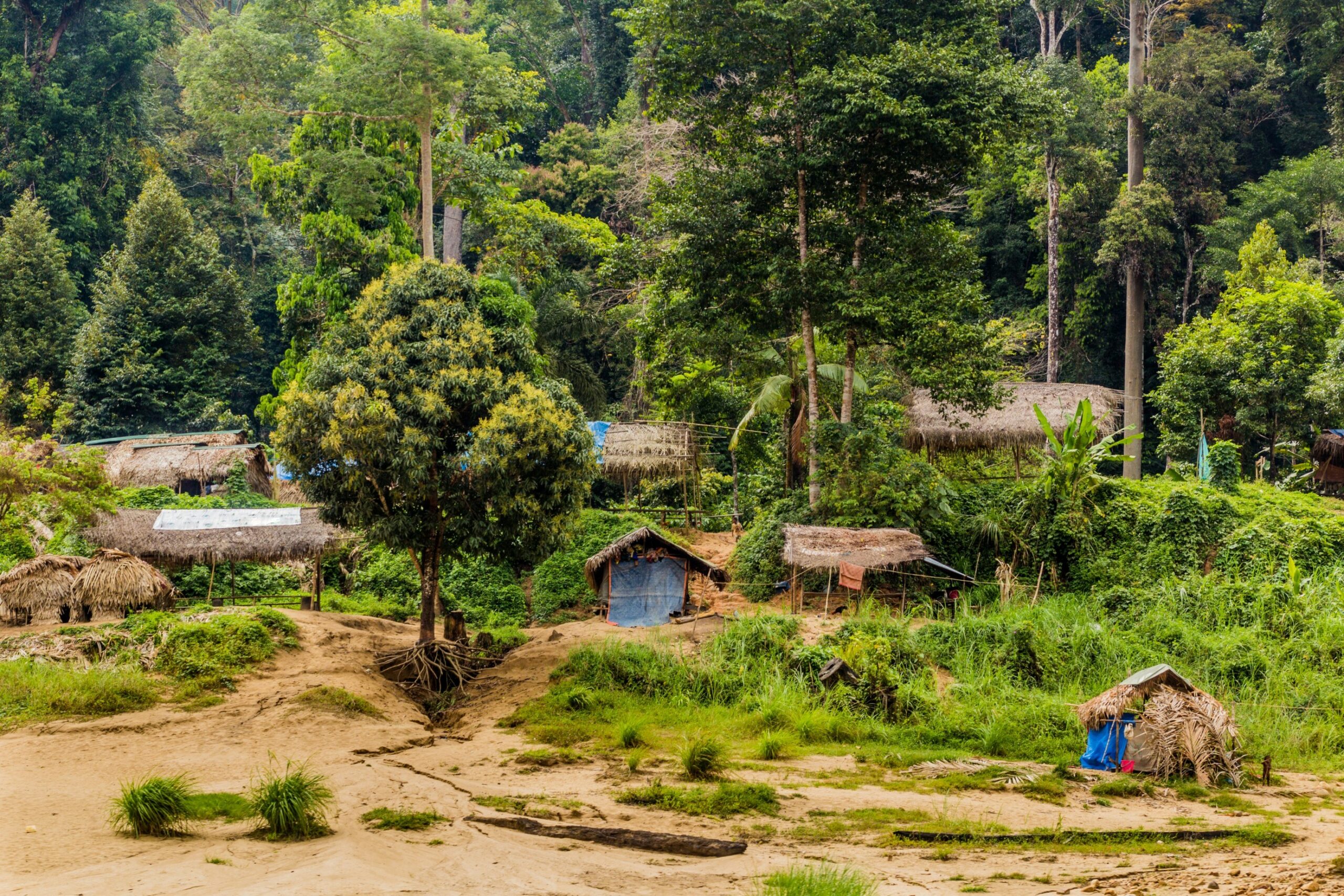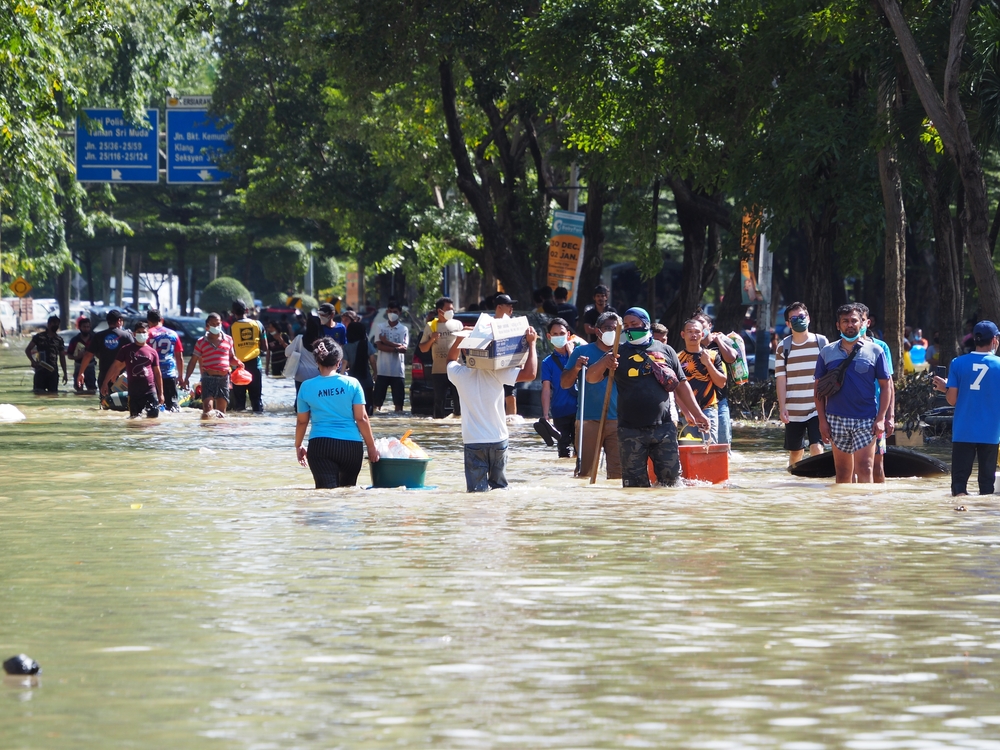Singapore vs Malaysia: Which is best to travel?
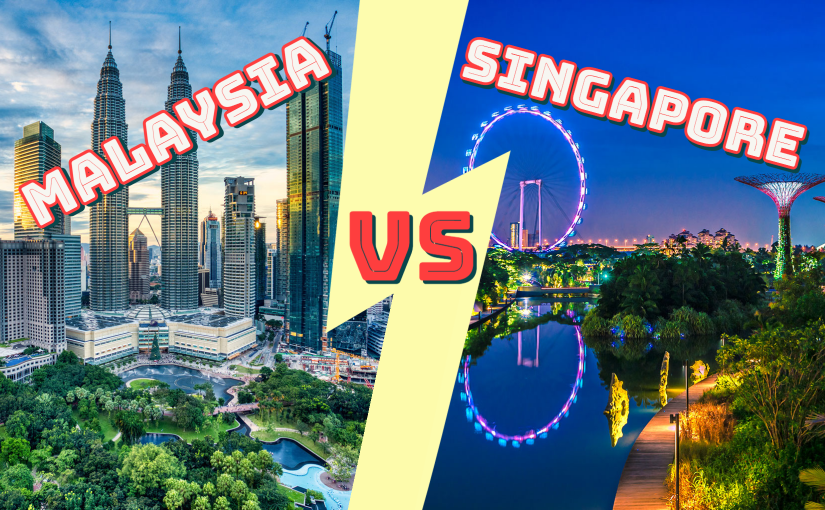
Both Singapore and Malaysia are picturesque and awe-worthy travel destinations. However, if you must choose between the two, this article will give you all the insights into the pros and cons of Singapore vs Malaysia.
Each location offers a unique selection of tourism activities and atmospheres. Therefore, depending on what you imagine your perfect holiday to be, you may want to opt for one rather than the other. Keep reading to learn everything you need to know about Singapore Vs Malaysia. Here we will touch upon everything from landscape, climate, the best things to do, and the crucial travel tips you need for both destinations.
The differences between Singapore Vs Malaysia
One of the most striking differences between these two beloved travel destinations is the stunning landscapes. Singapore is known for its limitless skyscrapers, while outside of Kuala Lumpur, Malaysia’s beauty lies in its natural wonder.
Where is Singapore?
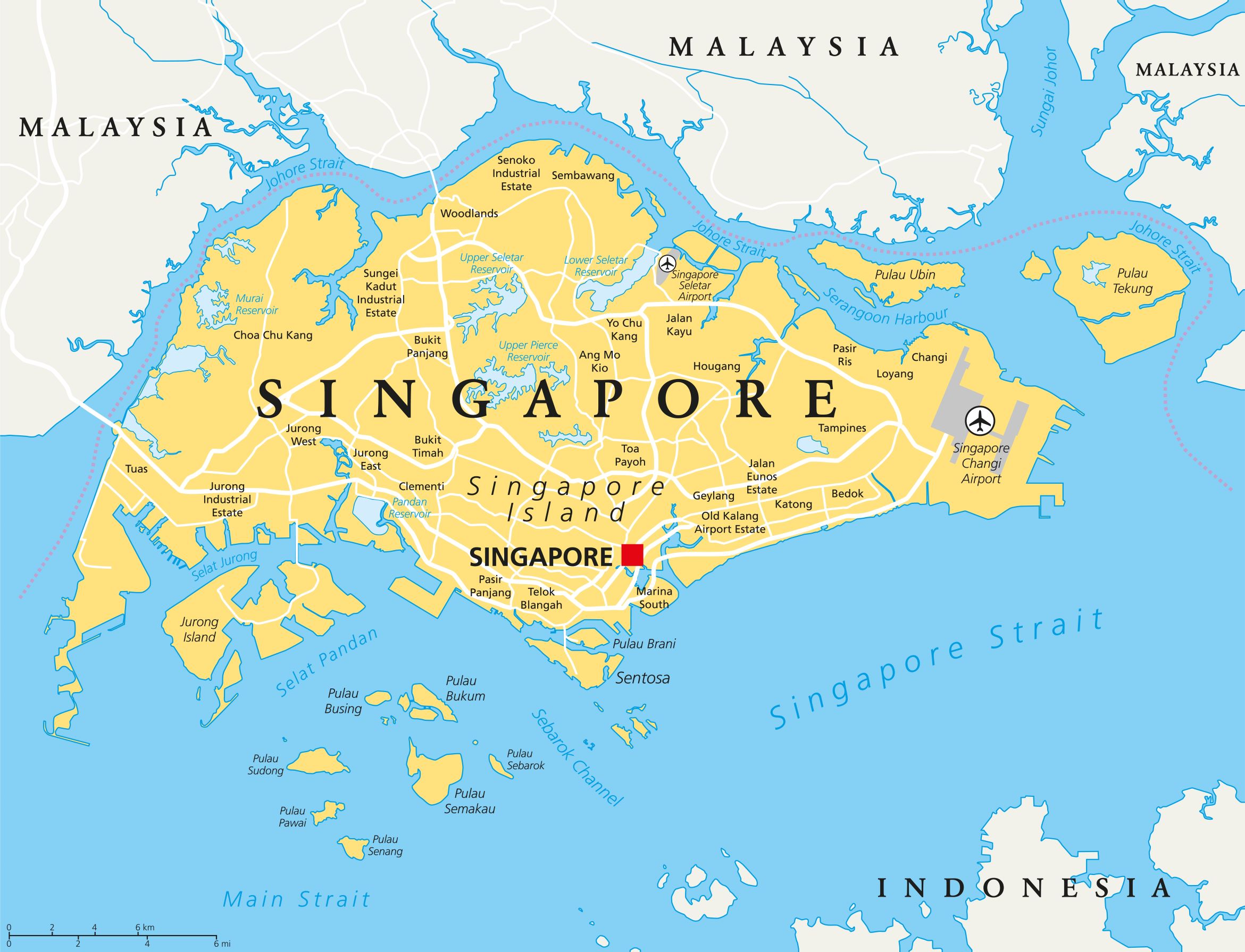
Map of Singapore
Singapore, officially the Republic of Singapore, is a sovereign island country in South east Asia. It is located north of the equator on the southern tip of the Malay Peninsula. Singapore borders the Strait of Malacca to the west, Singapore Strait to the South, The South China Sea to the East, and the Straits of Johor to the North. It is nestled between the counties of Indonesia and Malaysia and forms the shape of an island with its amalgamation of many islands. The Diamond-shaped Singapore Island is surrounded by 60 small islets. Jurong and Sentosa are Singapore’s most popular islands and boast an impressive skyline. The occupied island takes up 18 square miles of combined area. Some people worry that they may not be able to afford Singapore due to its position as a world class tourist attraction, however with such a vast selection, you will be able to find affordable options.
Where is Malaysia?
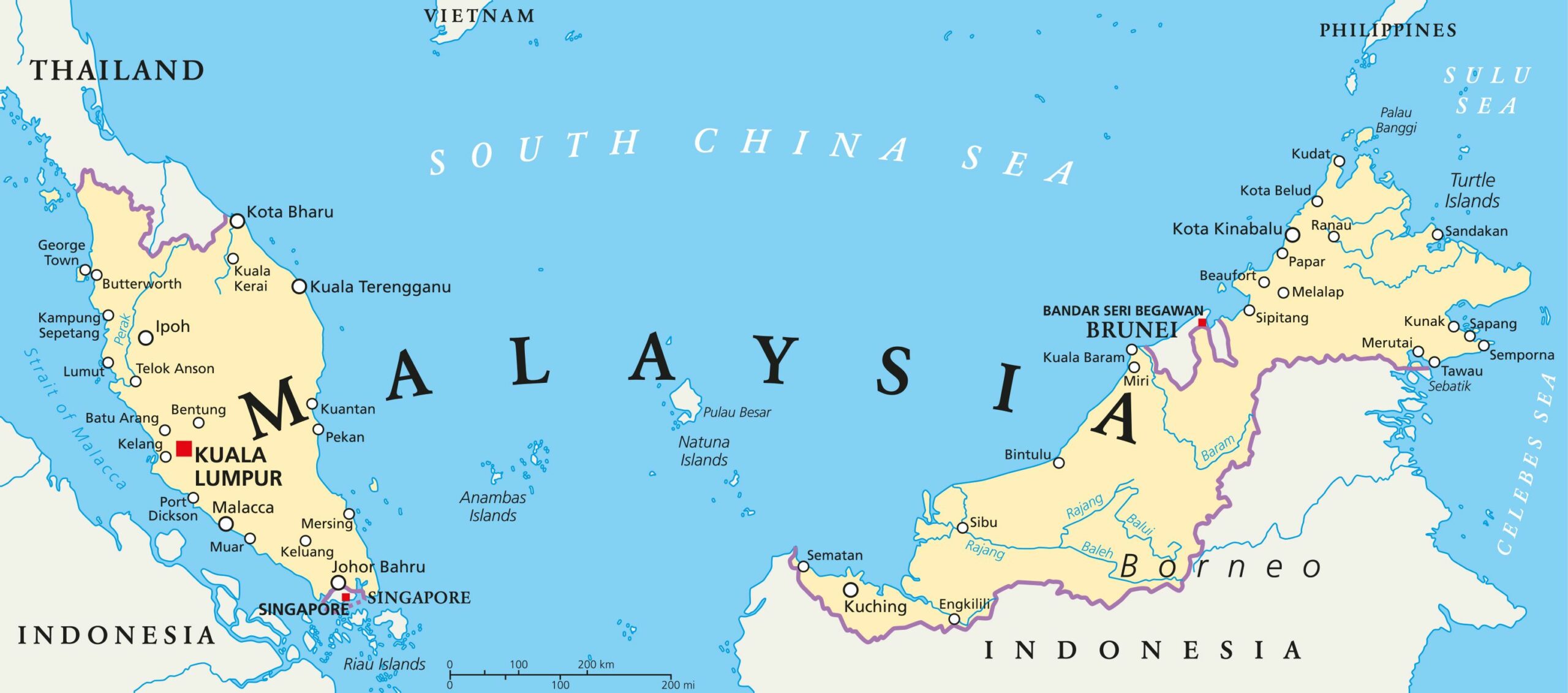
Map of Malaysia
Malaysia is in South-eastern Asia, partly on the Malay Peninsula south of Thailand and on the northern one-third of the island of Borneo. It borders Indonesia, Brunei, Vietnam and the South China Sea. Malaysia is separated into two major parts comprising East Malaysia and Peninsular Malaysia in the west. Peninsular Malaysia has impressive mountains surrounded by picturesque plains. The whole country is known for its shimmering and pristine beaches. Malaysia was established on the 16th of September 1963 and is a Member of the Commonwealth. Get answers to the Peninsular Malaysia Faq. Kuala Lumpur is the capital of Malaysia and offers mass rapid transit, light rail transit options and landmarks beloved by any Australia destination expert.
All about Singapore
The mega city of Singapore is easy to reach with Qatar Airways or one of the many other airlines that service the large city. Singapore is the largest and one of the busiest ports in Southeast Asia. Its growth and prosperity are thanks to its strategic location on the extremity of the Malay Peninsula. Singapore used to be a British Colony and now is a member of the Commonwealth. In 1963, Singapore joined the Federation of Malaysia but was ceded to become an independent state on August 9th, 1965. Ask any Singapore destination expert or any destination forums that will tell you that Singapore supposedly is the place to be. Most passport holders do not need to worry about getting a visa, or paying a visa fee. However it is a good idea to check on their website before hand.
What is nature like in Singapore?
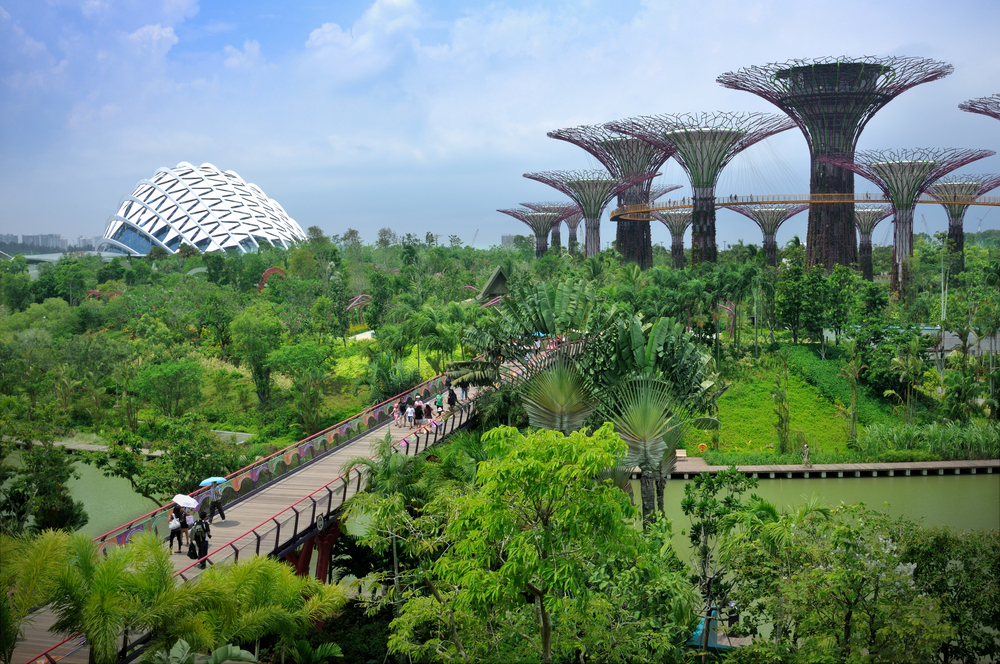
Due to built-up nature of Singapore, little remains of the original vegetation or animal life. There are a few thousand acres of evergreen rainforest preserved around rain catchment areas. Near the area of Kranjion the northwest of the island, some of the mangrove vegetation remains along with tracts of scrub or cogon grass. Many exotic plants have been introduced for visual and ornamental purposes around the islands.
In terms of wildlife, the largest native animals are the long-tailed macaque, the slow loris, and the scaly anteater. There is a large variety of colorful bird species including the Indian Mynah Bird, the Brahminy Kity, and the house Swallow. There are also many reptiles on the islands including lizards and some cobras. The ocean around Singapore is thriving and is the home to many fish and other marine species. There are extensive fringing coral reefs surrounding extensive parts of the coastline.
The people of Singapore
Singapore has a diverse population that settled on the islands due to its central location in many trading routes. There has been considerable immigration to the region with Chinese making up three-fourths of the current population. Malays and Indians are the second and third largest ethnic groups. However, none of these three major communities are homogenous. Among the Chinese, there is a proportion that originates from the Fujian Providence while the others are Teochew from Shantou and others from Guangdong. This means that the Chinese community speaks mutually incomprehensible dialects. Meanwhile, the Malays experience smaller linguistic differences while the Indonesians speak Javanese and Boyanese. The Indian community includes a vast diversity of backgrounds and languages including Tamils, Malayali, and Sikhs.
What is the official language of Singapore?
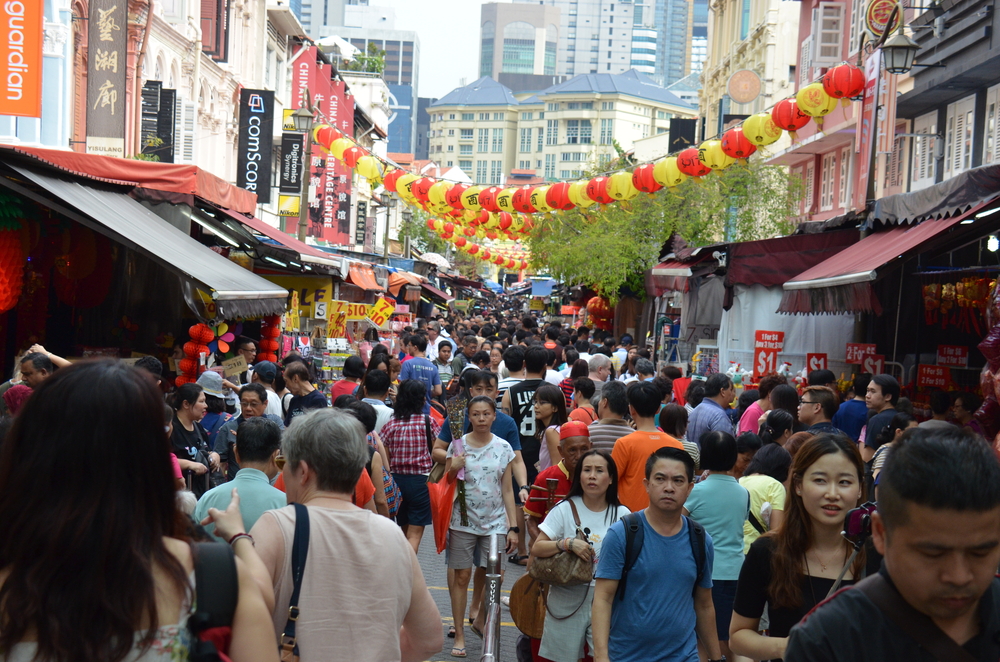
People in Singapore
Singapore, therefore, has more than four official languages including English, Mandarin Chinese, Malay, and Tamil. English is the main language used for administration, commerce, and industry. It is also the language used in most schools. One-third of the school population is taught in Mandarin Chinese which remains one of the most popular and relevant languages. Malay is designated as the country’s national language and is frequently used in communication between various ethnic and religious groups.
What is the Religion in Singapore?
Similarly, to the range of ethnicities that call Singapore home, religious affiliations are diverse. Two-thirds of Chinese adhere to Confucianism, Buddhism, or Daoism. Meanwhile, almost all Malays and some Indians follow the Islam Religion. The Christian community has been growing rapidly and is now a similar size to the Muslim population. The remaining populations practice Hinduism while many Singaporeans consider themselves free of religious affiliation.
What is the main Industry in Singapore?
Singapore has been focusing on creating a general policy of export-oriented industrialization. In an attempt to attract foreign investment, the economy was liberalized and incentives put in place including free trade zones. In addition, production was moved away from labor-intensive industries including textiles to high technology activities. These include precision equipment and oil refining providing a higher added value to production. Some people say there is not much charm left in Singapore, but if you read world travels posts you will see the hidden gems in the country.
All about Malaysia
The capital of Malaysia is Kuala Lumpur that in itself is a world-class destination. The Kuala Lumpur International airport is one of the largest airports in the world allowing Kuala Lumpur to be the center of south Asia. the Kuala Lumpur International Airport also offers domestic flights with Air Asia to visit Penang or other destinations. In your travels to Malaysia, make sure to set some time aside to visit Kuala Lumpur and its many enormous shopping malls. Both Kuala Lumpur and Singapore are considered a mega city with luxury hotels, a national museum, and access to plenty of nearby destinations. Malaysia destination experts can agree that the term ‘ Malaysia honeymoon ‘ is most searched due to the romantic and world class attractions Malaysia has to offer. 10 countries can currently apply for an EVISA to enter Malaysia, check out their website to see your passport status.
What is the Nature in Malaysia?
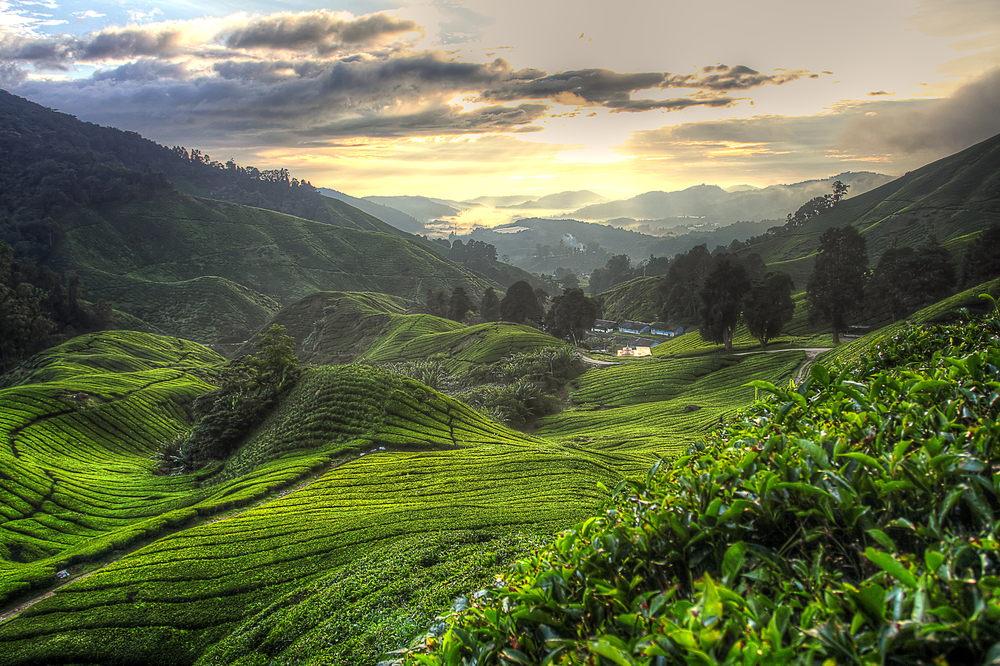
Malaysia is covered with its characteristic dense evergreen rainforest. More than two-fifths of the peninsula are densely covered in this vegetation while the other parts of Malaysia are under swamp forest. The distinctive vegetation zones change according to the soil type, location, and elevation. There are incredible tidal swamp forests on the coasts, freshwater forests on coastal plains, and lowland rainforests in the foothills of the mountains. Above 2,000 feet the vegetation changes to the cloud forest and provides a stark contrast to the white sandy beaches. The extensive variety of ecosystems means that Malaysia has incredible biodiversity in both flora and fauna. The flora includes several thousand species of plants and 2,000 species of trees. There are also several varieties of carnivorous pitcher plants with as little as one acre of forest housing a minimum of 100 varying species of plants. This incredibly densely vegetated area is now in danger of deforestation to make place for agricultural and commercial purposes.
The vast number of ecosystems naturally is the home to an extraordinary number of animal species. The East of Malaysia is the base of the shrinking habitat of the critically endangered Orangutans, Rhinoceros, sun bears, and proboscis monkeys. These animals are all under threat from changing landscapes and the large live animal trade.
The People in Malaysia
Similarly, to Singapore, Malaysia’s position as the epicenter of many trade routes has been a long-time meeting place for people from other parts of Asia. The whole of South east Asia shows a great ethnic complexity thanks to its position. Malaysia’s population is extremely diverse with individuals with varying ethnic, linguistic, religious, and cultural norms spread across the country. There is also an emphasis on the significant distinction for administrative purposes between the indigenous people, known as the bumiputra, and the immigrant population named the non-bumiputra. The indigenous people of Malaysia are the Malays while the non-bumiputra are primarily Chinese and South Asian. The majority of people live in Peninsular Malaysia rather than the rainforest-covered Eastern side of Malaysia.
What is the Language of Malaysia?
The official language of Malaysia is a standardized form of Malay, known as Bahasa Malaysia. It is spoken in most communities and is the main language taught in public primary and secondary schools. This standardized language helps unify the diversity of Malaysia’s population.
Religion in Malaysia
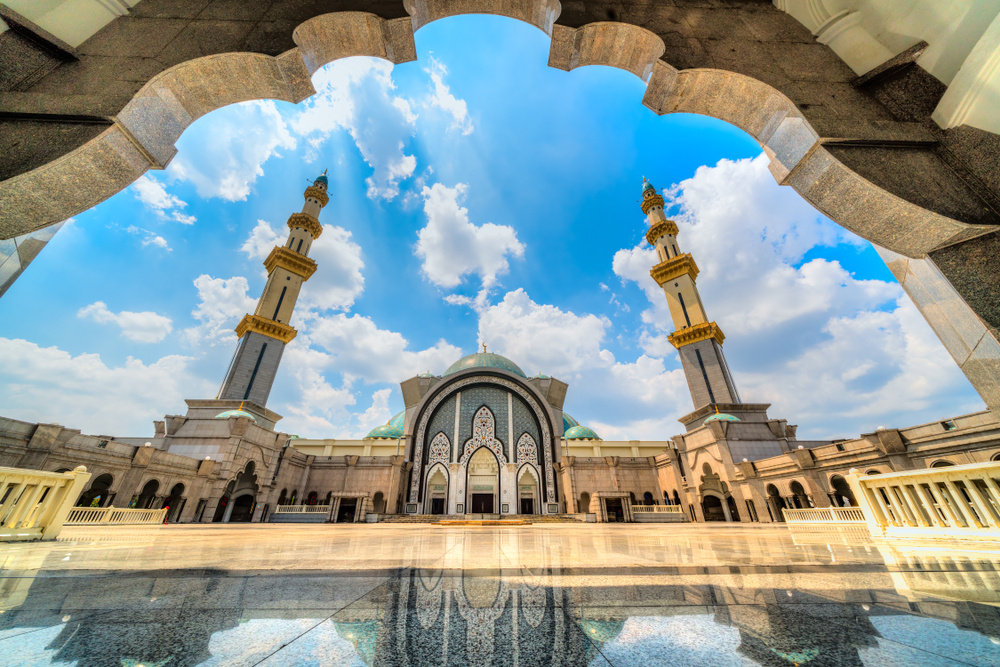
Malaysia’s official religion is Islam. Religion is one of the distinguishing factors of Malays and non-Malays in the country. By law, all Malays are Muslim so three-fifths of the population follow the Islamic Religion. Many of the non-Malay indigenous people have adopted Islam, while some communities keep their local religions. There are communities that follow Roman Catholicism and Anglicanism. Meanwhile, the other ethnicities including the Chinese have several religions they subscribe to including Confucianism, Buddhism, Daoism, and Christianity. The Indians and Sri Lankan people frequently practice Hinduism while Pakistani individuals are primarily Muslim.
Best things to see in Singapore
Once you have arrived, you will be drawn to the waterfront marina, the Singapore flyer, and all those minor attractions. Make sure to take some time to visit Little India. This buzzing and colorful historic area showcase the best of Singapore’s Indian community. You will be met by vibrant culture, incredible shopping and delicious local food. Do not forget to visit Orchard Shopping Street while you are in Singapore.
1. Gardens by the Bay
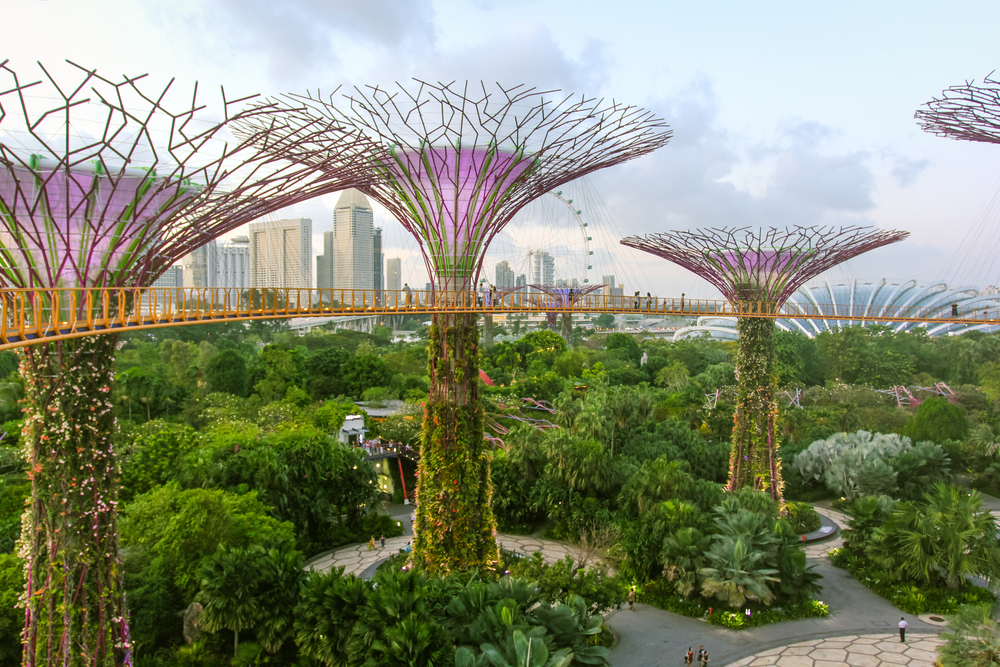
These iconic gardens in Singapore are a must-visit to see the spectacular grounds surrounded by exotic foliage. The Heritage Gardens also provide a spotlight on the country’s history through the plants. Explore the Cloud Forest, Flower Dome and Floral Fantasy to walk through colorful flowers from around the world. The Gardens also have colossal and ancient trees with incredible views from the Supertree Observatory.
2. Explore the street art at Haji Lane
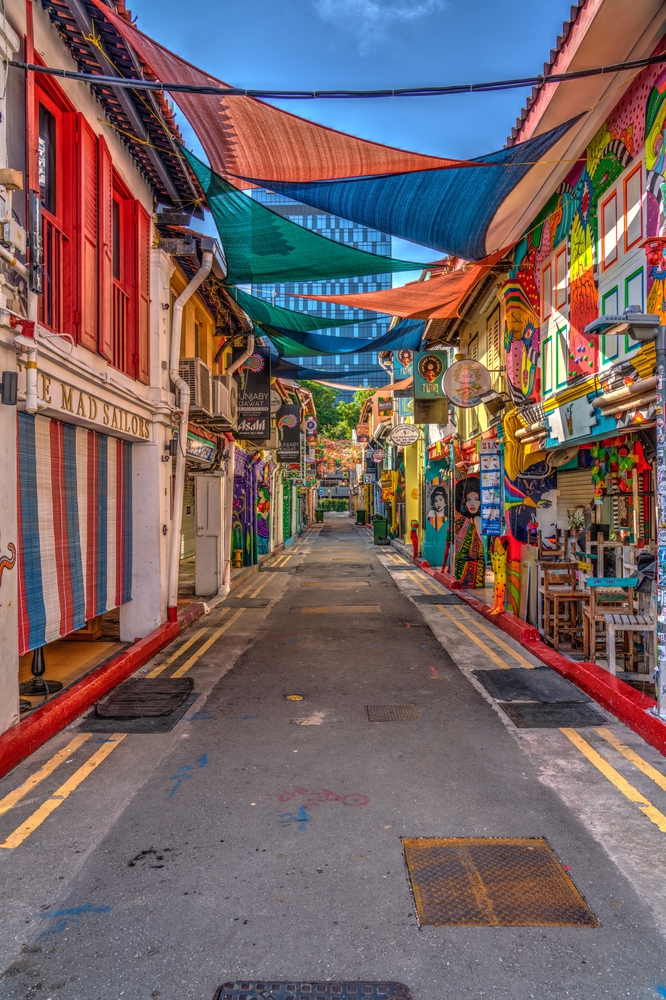
Haji Laneis a narrow lane in the Brasa Basah-Bugis district filled with adorable cafes, trendy bars, alternative shops and graffiti art on the walls. This location is the original hipster and youthful hideout in the city. The shops that are hidden in this lane offer unique products and goods that you cannot find in other places in Singapore. These independent boutiques and cafes offer a modern and relaxing atmosphere. Make sure to check out Singapore’s first outdoor art gallery at Gelam Gallery.
3. Befriend the Orangutans at Singapore Zoo
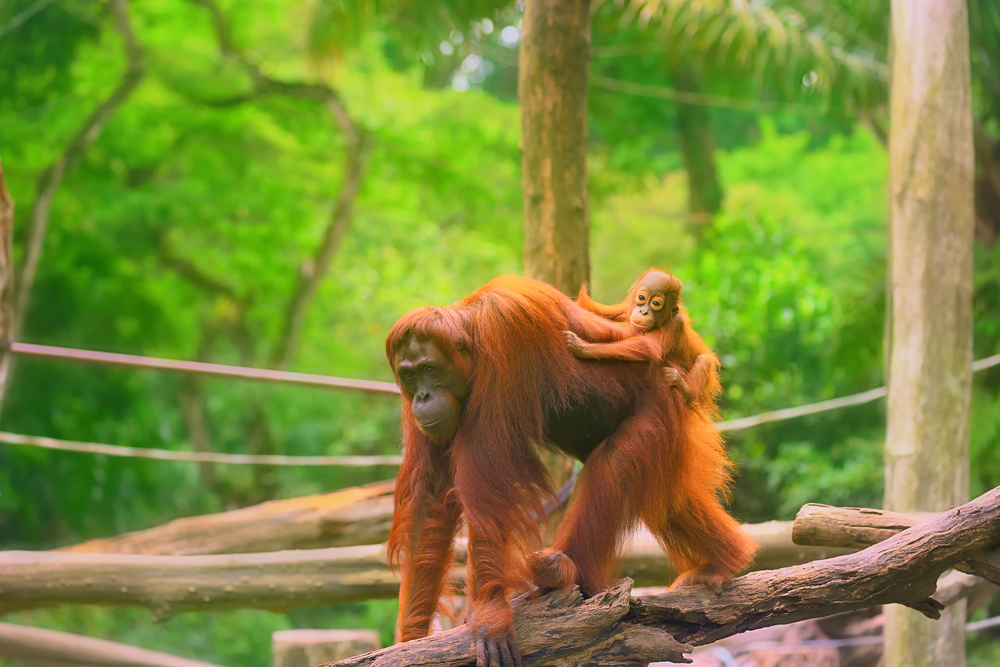
The Singapore Zoo is one of the world’s first ‘open concept’ zoos that is home to over 2,500 species of animals. This enormous zoo is spread across 28 hectares of land and offers animals large areas to roam. Observe and learn about the many animals including the exotic white tiger and Hamadryas baboon. The highlight of many visitors is the critically endangered orangutans. Our primate cousins typically make an appearance between 9:30 am and 10 am every morning for their jungle breakfast. Do not miss the opportunity to watch these amazing animals.
Side note: if you would like to see Orangutans in the wind, then consider visiting the orang utan island.
4. Visit the iconic Marina Bay Sands
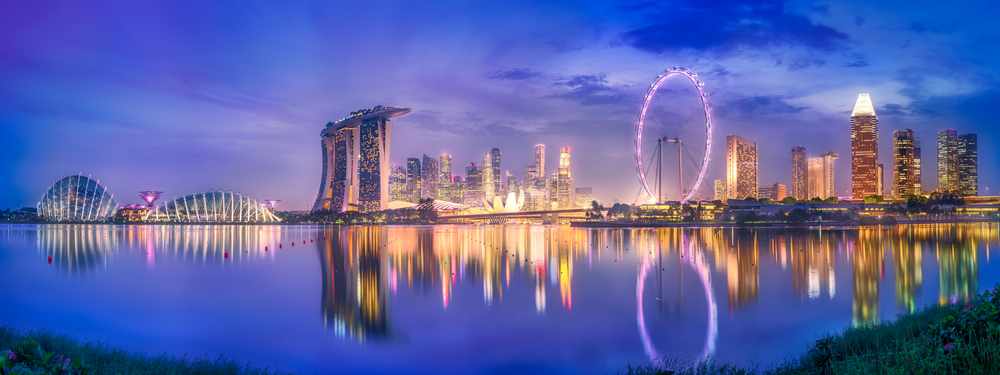
The Marina Bay Sands is easily one of Singapore’s most iconic structures. This 200-m tall hotel features floor-to-ceiling windowed towels and a spectacular shelf of architecture. Only hotel guests are allowed on the rooftop, so consider booking your stay here for a night or two. The Marina Bay Sands is also the home to many of the city’s top restaurants and bars for guests and travelers to wine and dine. If you have the chance to have a look or dip in the rooftop infinity pool, do not forget your camera!
5. Pet some cats on St. John’s Island
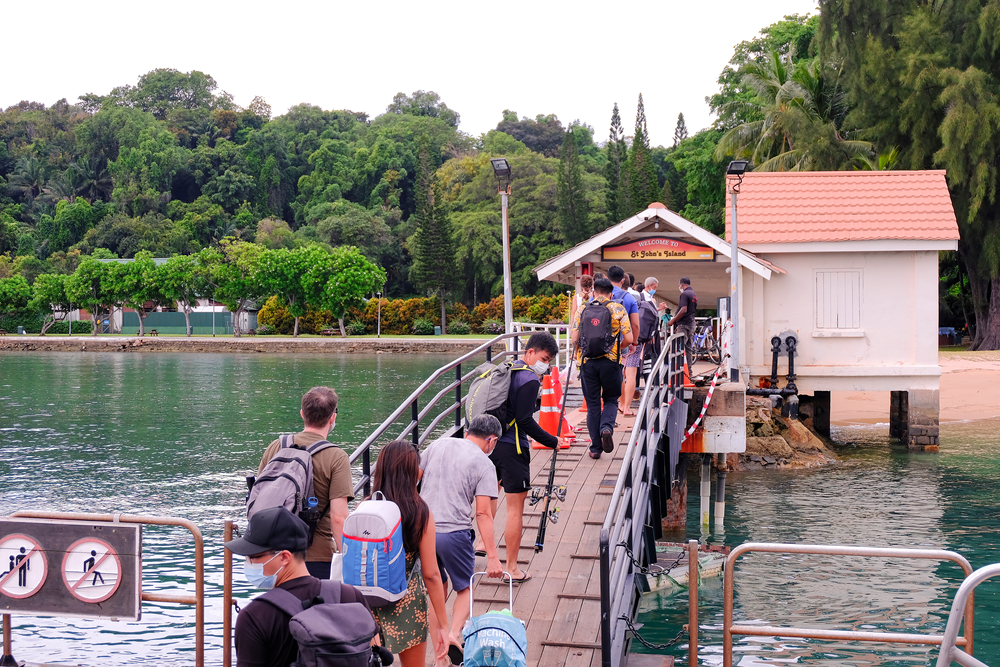
St John’s Island has earned worldwide notoriety for the large number of friendly cats that cover the island. Including cat watching, there are plenty of other activities that you can participate in including wandering up the beaches, going for a swim or visiting the Sisters Island Marine Park Public Gallery.
6. Walk along Kampong Lorong Buankok
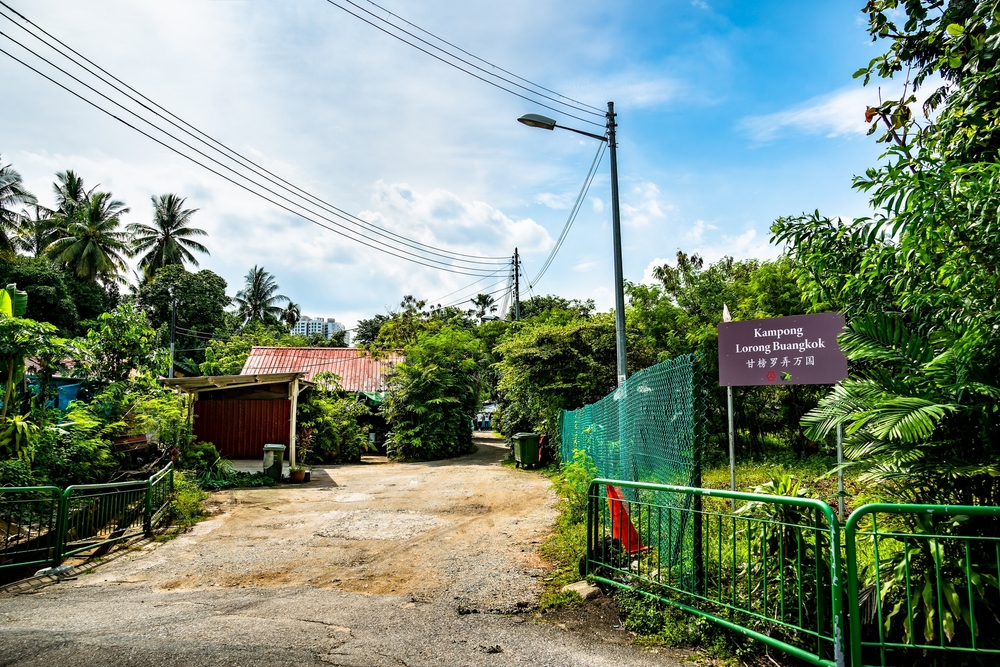
Kampong Lorong Buangkok is the last village cluster that is still on mainland Singapore. This traditional small village gives you an insight into the city’s history and past. Stroll through the small village to travel back in time to a simpler and less metropolis-like Singapore. Keep in mind these are still people’s homes so be respectful of their space and privacy.
Best things to see in Malaysia
Kuala Lumpur offers travelers plenty of shopping, fine dining and cultural experiences. Take the time to visit the stunning Petronas Towers in Kuala Lumpur. However if you wish to leave the city behind, below are topics that Malaysia recent conversations would bring up.
1. Grab a cup of tea at the Cameron Highlands
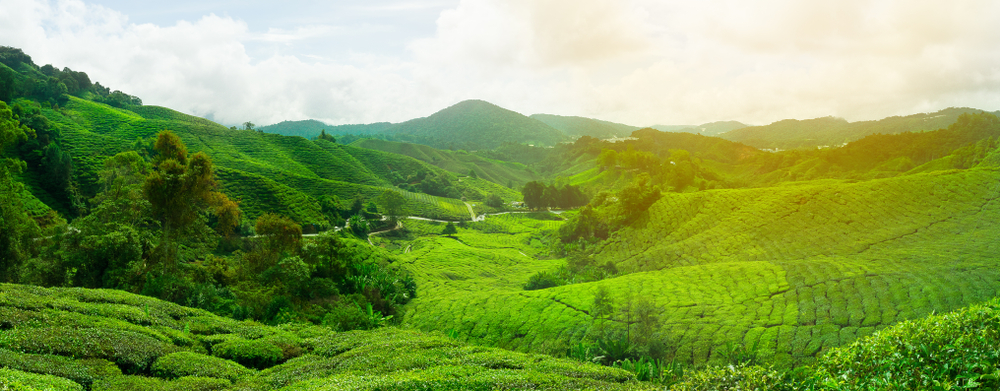
When the British Colonialists fled to higher grounds to escape the muggy heat of Malaysia’s lowlands, they founded hill stations to begin a tea industry. The most famous of these locations is the Cameron Highlands located between 4265ft to 6000ft. Including tea tastings, you can explore the strawberry plantations, souvenir stalls, or one of the many hikes. The Boh Tea Gardens offer guided tours.
2. Explore the Pristine Perhentian Islands
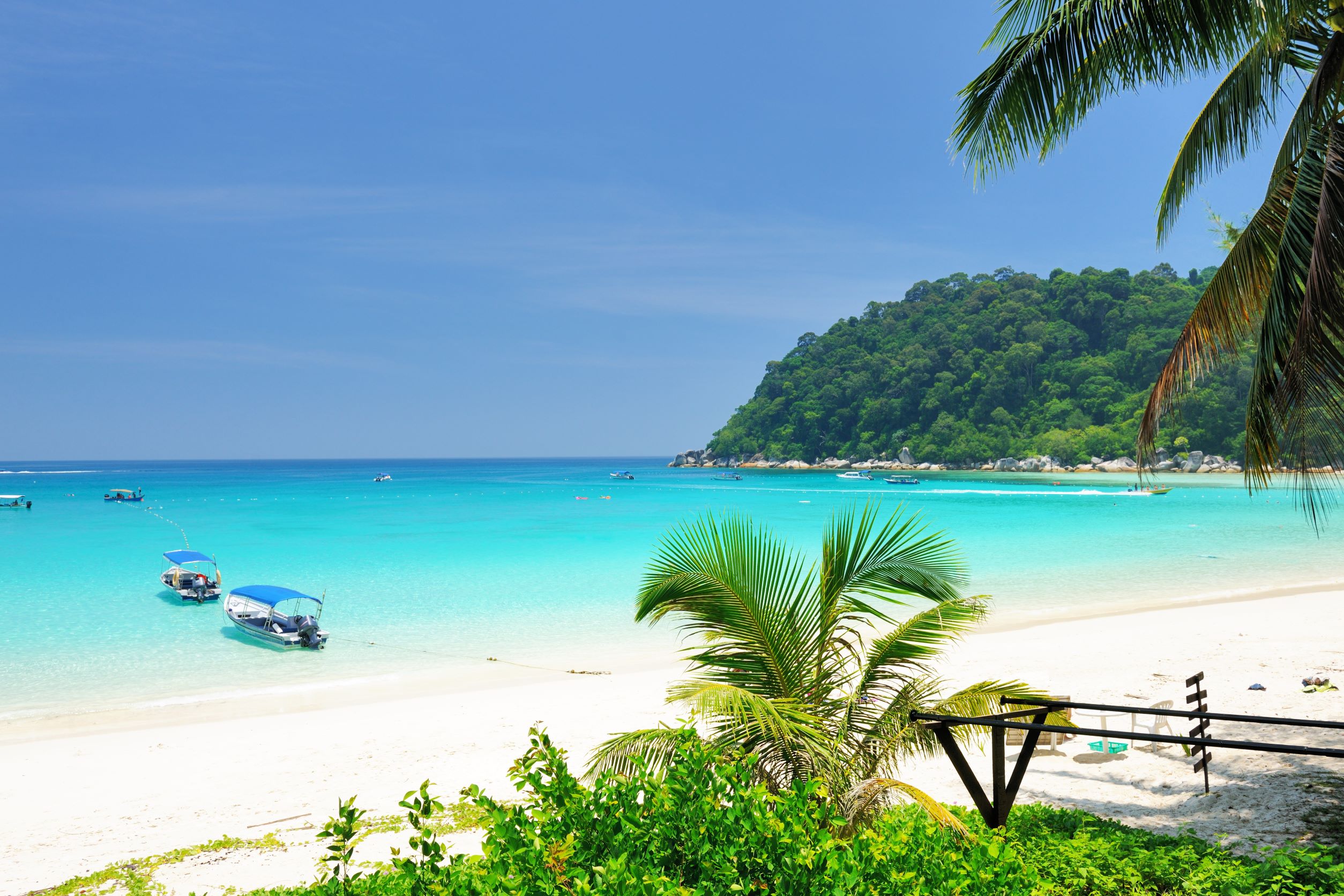
Perhentian Islands are one of Malaysia’s top honeymoon destinations and a perfect location for culture, food, and beach life. It is also world-renown for its magical underwater ecosystems. Snorkels, divers, and free divers alike flock to the Islands to swim among the sea turtles, gentle nurse sharks, sting rays, stunning barracuda, and reef fish. If you have always wanted to learn to dive, the Perhentians offer calm waters and affordable PADI certification courses. There can easily be accessed by a domestic flight from Kuala Lumpur International Airport.
3. Wine and Dine in George Town, Penang Island
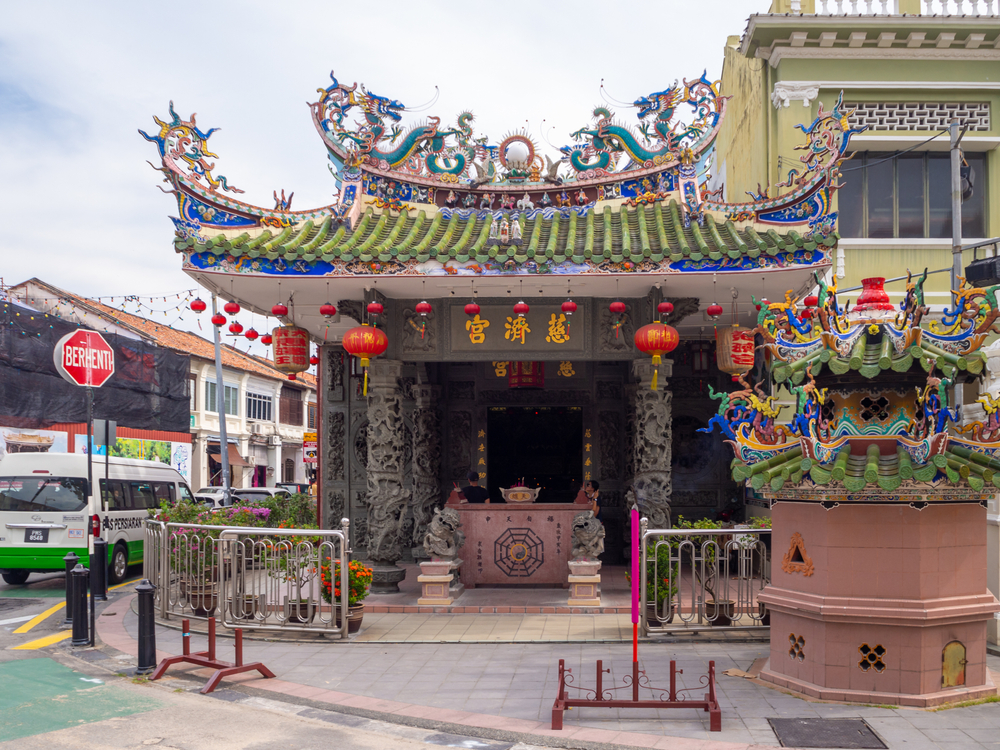
The capital of Penang Island is brimming with street food, boutiques, wonderful street food, and elegant cafes. Penangis filled with British Raj-era buildings and provides an incredible backdrop for a relaxed dinner from the street foods or luxurious dream menus in lovely restaurants. The food prices and nearby art encourage many people to travel and visit here.e People visit Penang as a key tourist town in Malaysia. The only trouble you will experience in George Town is what food to choose. Penang’s attractions of local food and historical and cultural charm offer a world-class destination.
4. Climg the Summit of Mt Kinabalu

If you are looking for an adventurous challenge, then consider scaling the highest mountain in Borneo. Gunung Kinabalu is Malaysia’s first UNESCO World Heritage site. It provides an awe-inspiring view of the Crocker Mountain Range and surrounding landscape. This 10.2-mile round trip (one way) is certainly a workout and covers beautiful pathways between treelines, past lunar rockfaces, high alpine grasslands, bamboo, and rhododendrons. For the best view, you will want to rise early to reach the summit by sunrise.
5. Hike through Taman Negara
Another must-visit to enjoy Malaysia’s natural wonder is the unspoiled natural pocket of Taman Negara. Unfortunately, so much of Malaysia has become overrun with palm plantations and cultivated land, that an area as pristine as this is a rare wonder. This National Park of protected land between Pahang, Kelantan, and Terengganu states features a 130 million-year-old rainforest. It is one of the oldest rainforests in the world featuring a deafening soundtrack of the jungle. It is filled with the sound of macaque chatter, hornbills clacking and the occasional sound of tiger, elephant, or peacock pheasant.
6. Test your nerves at Batu Caves
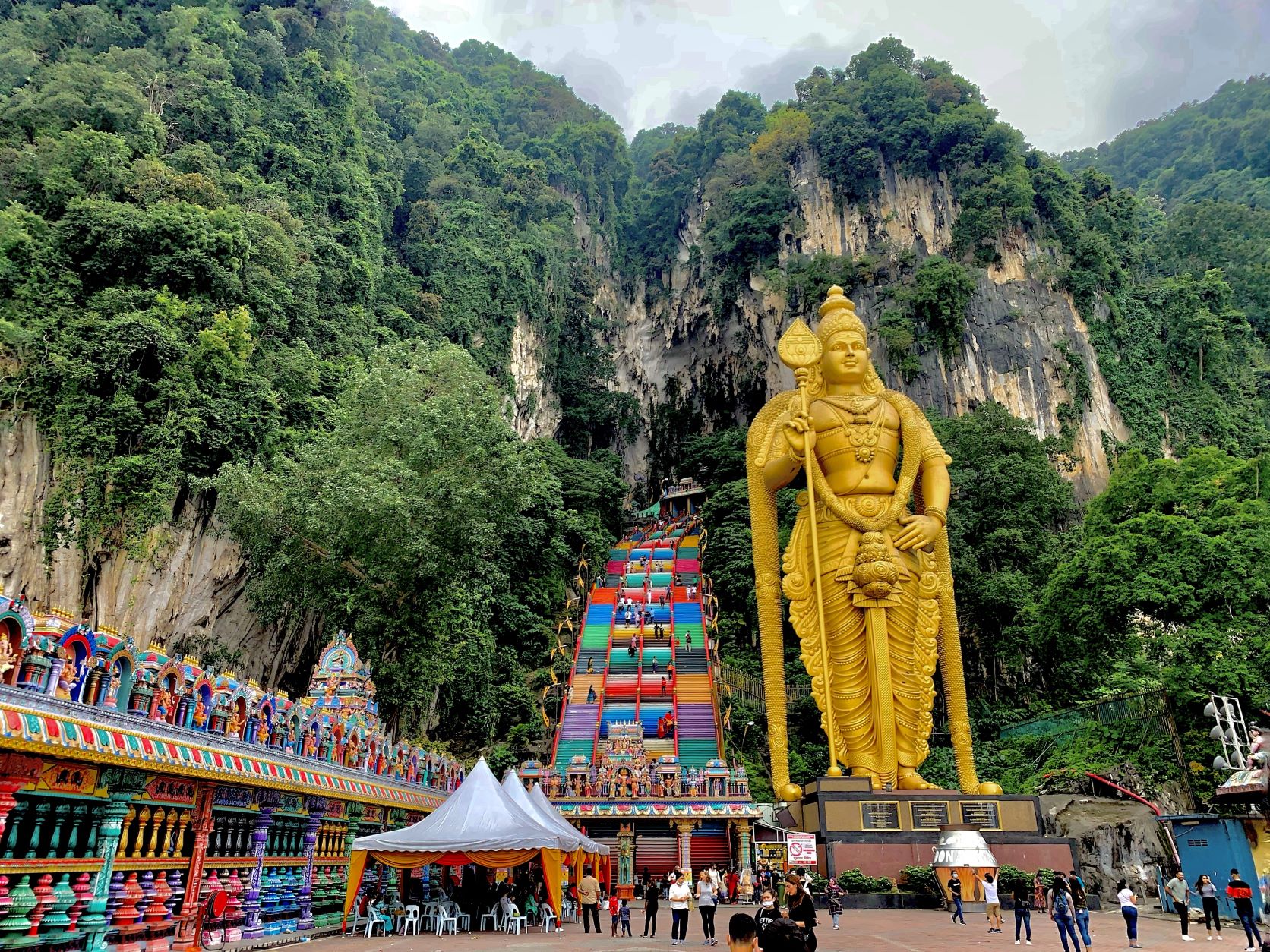
The Batu Caves are located above sheer limestone cliffs and at the top of 272 steps. The first ascent to the Batu Caves is unforgettable due to the stunning views, the imperious gilded statue of the Hindu god Lord Murugan and the many Macaques watching your progress. This trip is a popular choice from Kuala Lumpur and attracts many tourists, pilgrims, and locals alike. Batu Caves are a complex collection of limestone caverns with entrancing temples filled with dioramas showing mythical scenes.
When is the best time to visit Singapore?
Singapore offers a tropical climate throughout the year while Malaysia experiences similarly hot and humid weather. If you are planning to travel to Singapore, you would want to avoid the rainy season that spans from November to December. Meanwhile, December to February and June to September are 2 of the best times to travel to Malaysia.
The best time to visit Singapore is from December to June. Once the wet season ends in December, the country welcomes its dry season from February to April. During this period of the year, the country has the least amount of rain, the lowest humidity, and therefore the most sunshine. Due to its location near the equator, Singapore’s weather year-round is consistent. This makes it a perfect travel destination for almost all the year. If you are looking to avoid crowds, then you may want to consider the less popular part of the year from July to November.
If you are hoping for a relaxing time on a warm beach, then you may want to visit Sentosa Island between June to August. This is Singapore Summer provides the best weather for outdoor activities and frolicking on the beach.
Another fantastic time to visit is in time for the Chinese New Year. This event prompts a grandiose festival in Singapore sometime between January and February.
Other festivals worth visiting include the Mid-Autumn festival in October, the Hari Raja in June, and Singapore’s National Day in August.
If you are hoping to get your shopping fix in Singapore, then make sure to not miss the Great Singapore Sale between June and August. This yearly sale attracts many shopping lovers to take advantage of the sales and shopping crowds.
Since there are few organized events between the months of July to August therefore it is the quietest period for travelers. If you are hoping to get the best flight and hotel deals, then you may want to consider the Singapore Summer.
What is the Climate like in Singapore?
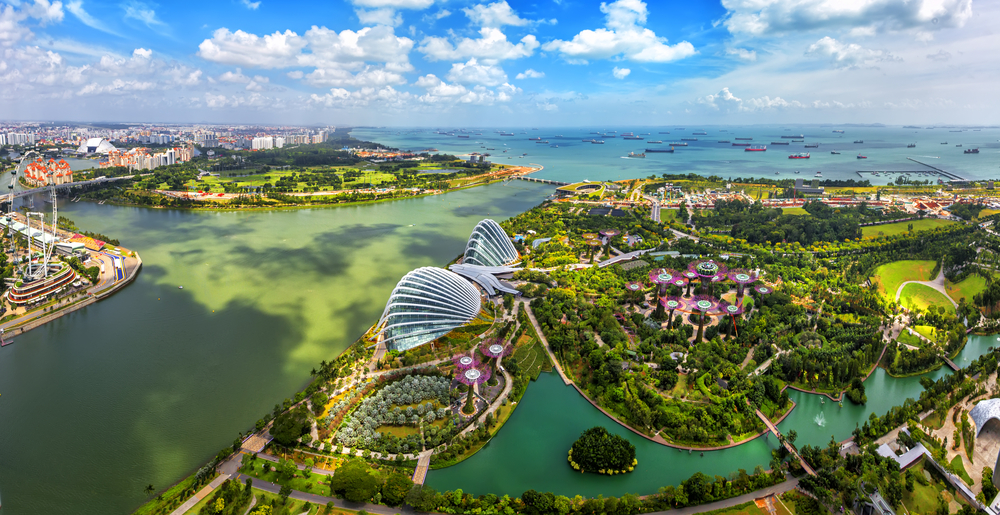
December to early March
The wet season spans from December to March with consistent rainfall recorded during these months. The heaviest rain typically falls in December. The weather is typically quite windy, cloudy with high humidity. There is a high chance of thunderstorms.
Temperature: Average of 30° high to 24° low
Weather: December is the wettest month in Singapore with 63mm to 766mm of rain recorded.
Events: Significant events and festivals during these months are Christmas, ZoukOut Music festival, Pongal, Marina Bay Singapore New Year’s countdown, Chinese New Year, Singapore Carnival, Fringe Festival, etc.
Reasons to visit: The atmosphere is very festive and joyful around this time because of Christmas, New Year, and Chinese New Year falling in December and January. One can experience and witness the vibrant side of Singapore during this time. Singapore hosts the most eventful Christmas celebrations, carnivals, New Year’s celebrations, and fireworks.
Tips for the Season: Due to the amount of rain during this season, it is a good idea to carry an umbrella and dress for the weather. The wind and rain intensity typically increases in the evening. This is the peak travel period for Singapore.
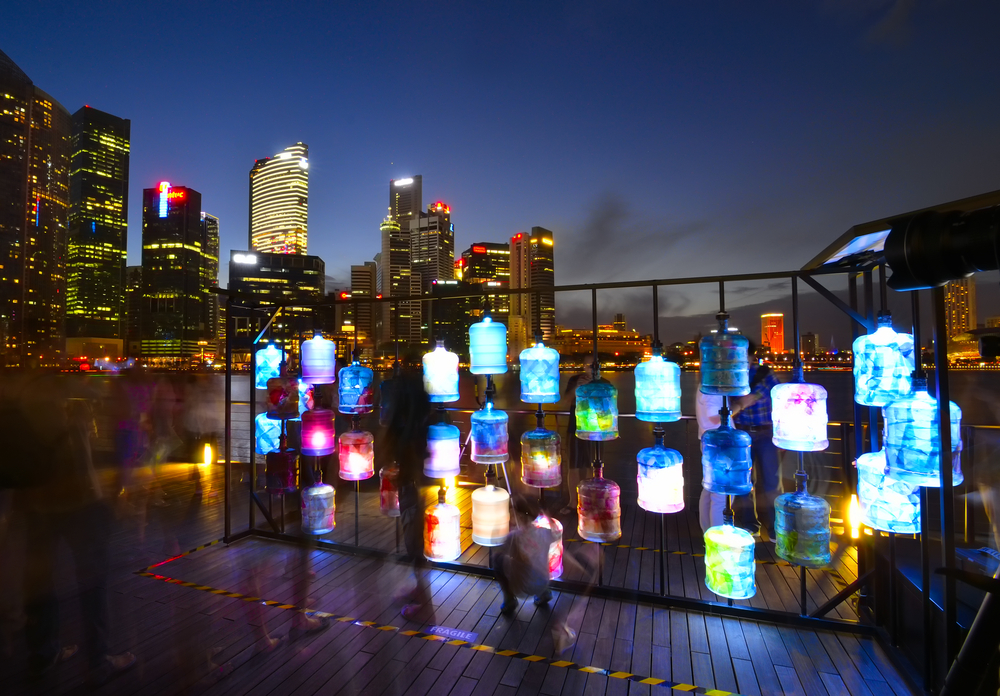
Late March to May
After the monsoon season, the temperature typically increases and Singapore experiences sporadic thunderstorms.
Temperature: Average of 32° high to 25° low
Weather: The weather is usually sunny with less rainfall and wind than in the wet season. Some thunderstorms may still occur.
Events: The prestigious Singapore Fashion Week is held between March-April, Dragon Boat Festival, Vesak Day, Singapore Arts Festival, Singapore International Film Festival, etc.
Reasons to visit: Following the Northeast Monsoons, the weather is sunnier and less cloudy offering better weather for visitors. There is a large number of festivals and events planned after the rains and the general atmosphere is positive for the start of the dry season.
Tips for the season: It is a good idea to carry jackets and an umbrella as the weather is unpredictable.
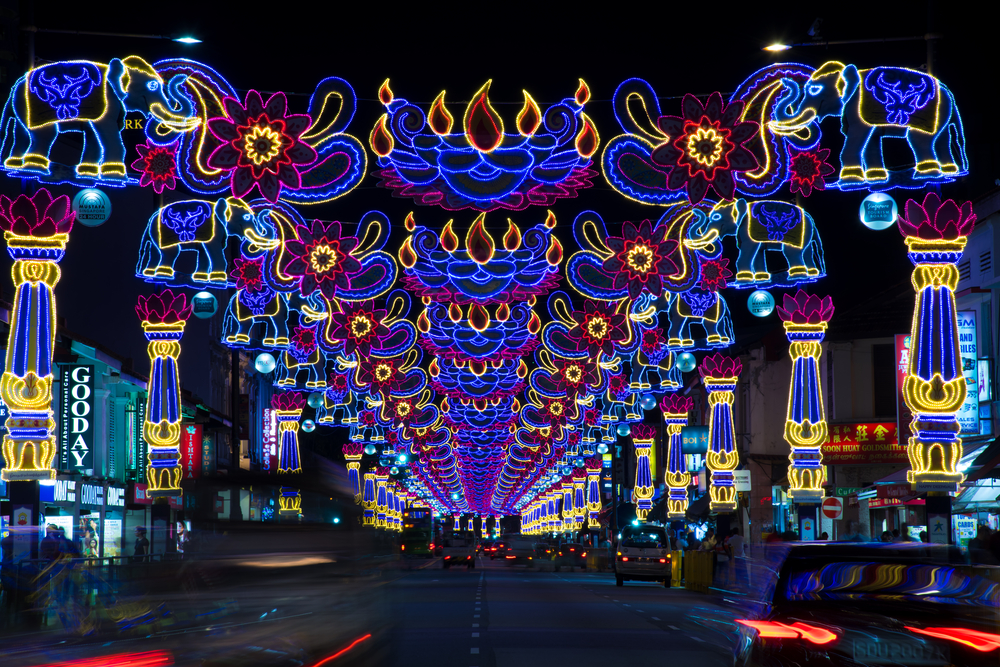
June to September
Expect sporadic showers and thunderstorms during the middle of the day.
Temperature: Average of 32° high to 25° low.
Weather: The Southwest Monsoons begin in June but Singapore experiences less rainfall and thunderstorms than other areas. It is sunny during the day with the occasional thunderstorms.
Events: Significant events and festivals during these months are Hari Raya Aidilfitri, Singapore International Festival of Arts, National Day, The Hungry Ghost Festival, The Great Singapore Sale, Singapore Food Festival, Singapore Night Festival, Grand Prix Season, Lantern Festival, etc.
Reason to Visit: Owing to the pleasant climate, Singapore hosts a list of interesting and diverse festivals during these months.
Tips for the season: Make sure to protect your skin from the sun by wearing SPF and long sleeve clothing.
October to November
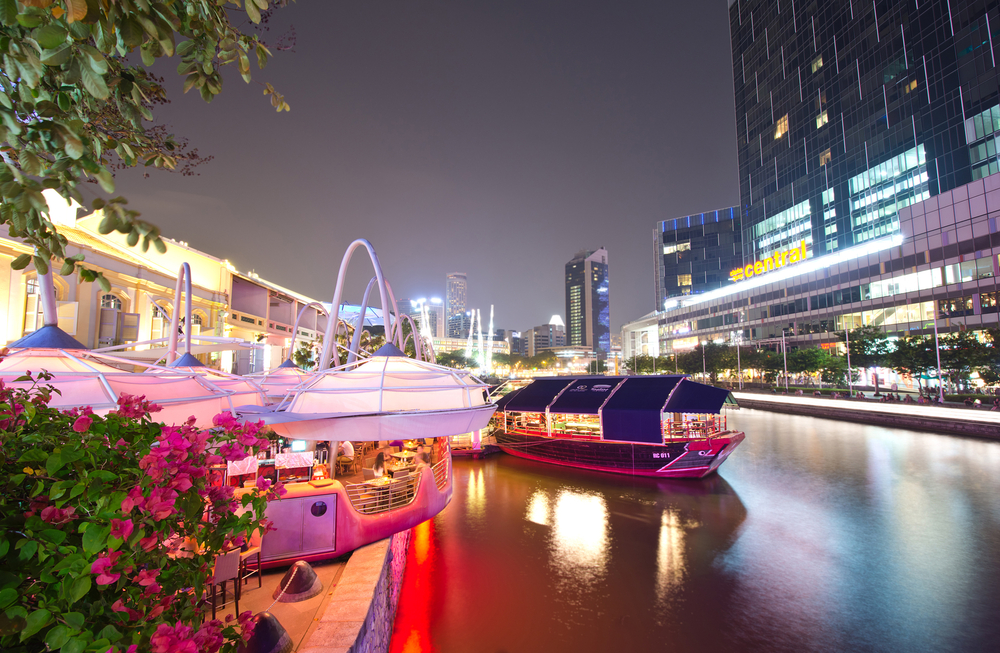
This time of the year is usually rainier than the inter-monsoon period. Be prepared for some intense thunderstorms that may occur at noon and during the early evening.
Temperature: Average of 32° high to 25° lows
Weather: The weather is typically quite humid and less windy.
Events: Significant events and festivals during these months are Deepavali, Hari Raya Haji, Singapore River Festival etc.
Reasons to visit: Some of the most popular religious festivals occur between October and November. Therefore, it is a fantastic time to experience the tradition and culture of Singapore.
Tips for the season: Wear some rain-appropriate clothes in case you are met with one of the possible thunderstorms during this time of the year.
What is the best time to visit Malaysia?
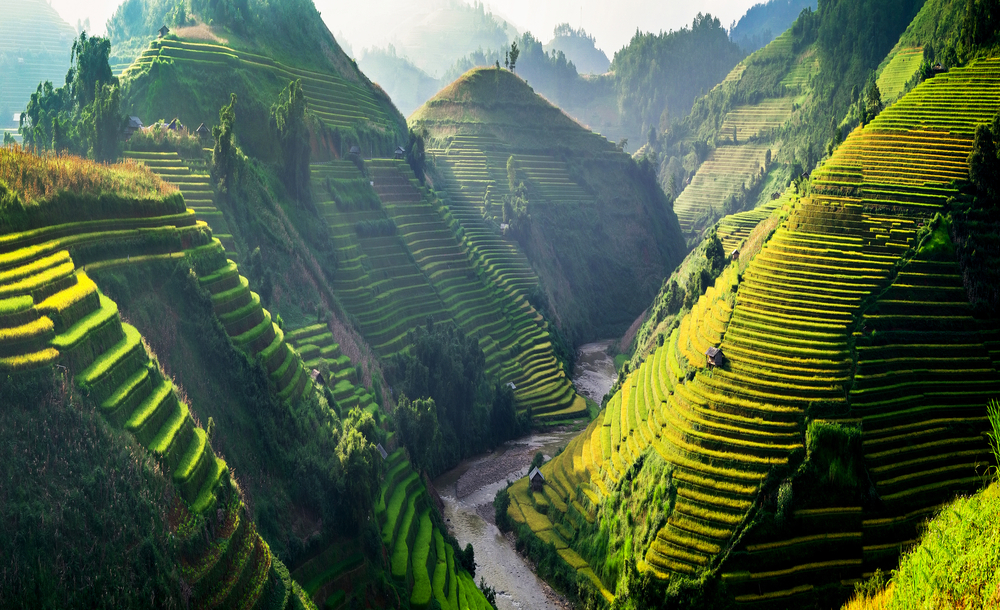
Due to Malaysia’s location and geographical shape, it experiences a dual tropical monsoon climate. The east coast monsoon lasts from March until September, while the west coast monsoon runs from October to April. This means you will always be able to find good weather on one side of the peninsula. However, even the driest season in Malaysia may see some light rains and showers during the day due to the tropical climate. For this reason, it is recommended to be prepared for the rain and bring an umbrella with you. Despite the abundant rains during the west coast monsoon, January and February are a favorite times for visitors to enjoy Malaysia. This is due to the many festivals, including the Chinese New Year and Thaipusam that elevate the atmosphere in the whole country. Once the rains subside, the country transforms into a welcoming backdrop of comfortable temperatures and rushing waterfalls. May also bring the Sabah Fest, which is a weeklong Sabahan culture celebration. June has the Gawai Festivals that celebrate the rice harvest season with food, drinks, dancing, and music.
Spring Season

Spring in Malaysia begins in March and extends until the last week of May.
Temperature: The highs are 33° high to 22° lows Celsius.
Weather: The weather in spring provides a calm contrast to mild winds in March and May due to the southwest and northeast monsoons.
Reasons to visit: This time of the year offers calm seas and perfect weather for beach explorations and ocean-based activities.
Tips for the season: The sunny weather means that it is a good idea to bring ocean-friendly sunscreen and long sleeves.
The season of Summer
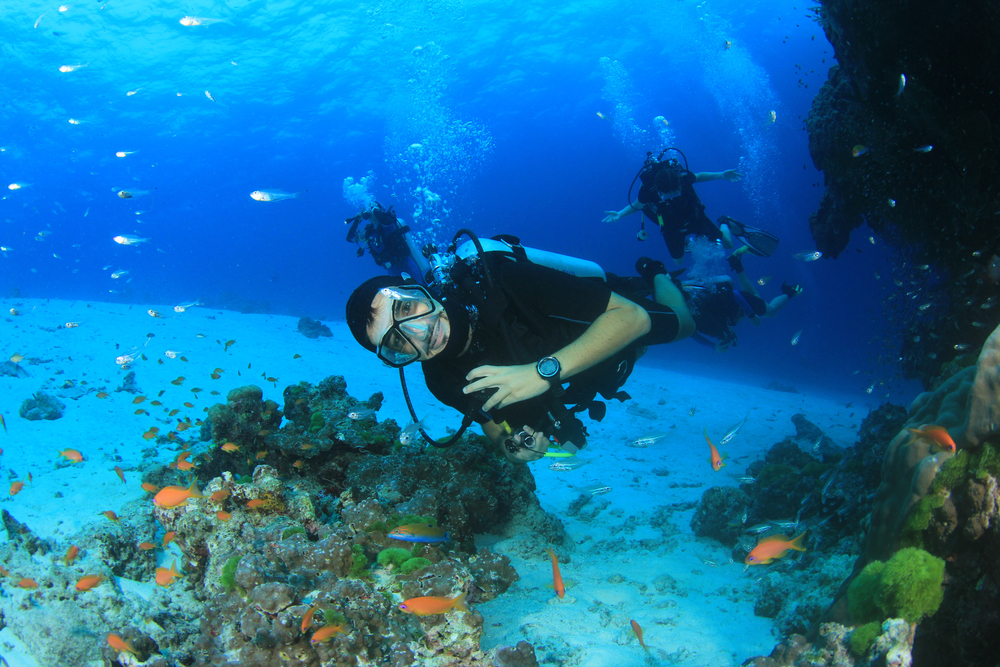
The summer in Malaysia aligns with the northern hemisphere season that begins in June and extends to August.
Temperature: The highs are 32° high to 23° lows Celsius.
Weather: The summer months tend to be extremely dry with minimal participation in the southwest regions of the country. In the Western part of Malaysia, slight rainfalls can be expected until the end of August.
Reasons to visit: Summer is the best time for scuba diving and other water sports in the beautiful coastal regions. The low winds and warm temperatures make this the most popular time for tourists and travelers to go to Malaysia.
Tips for the season: Make sure to avoid damage from the sun by using daily 30+ SPF sunscreen. The occasional rain in August may encourage visitors to carry an umbrella.
Autumn Season
The Autumn season begins at the start of September and lasts into November.
Temperature: The highs are 32° high to 22° lows Celsius.
Weather: As the second monsoon season nears, the amount of rain gradually increases. Showers start in the Western part of Malaysia in September, while the East of Malaysia start in October.
Reasons to visit: The temperature is still warm, and the occasional rain provides a welcome time to visit museums and indoor Malaysia activities. Considering this is one of the least popular times to visit Malaysia, tourists can benefit from cheaper accommodation options.
Know before you visit: November is the coldest and the rainiest month in Malaysia when the temperature falls below 22 degrees, causing chills.
Tips for the season: Temperatures may dip below 22 degrees, so it is a good idea to bring warmer clothes. The frequent rain should encourage all visitors to always carry an umbrella with them.
Winter Season
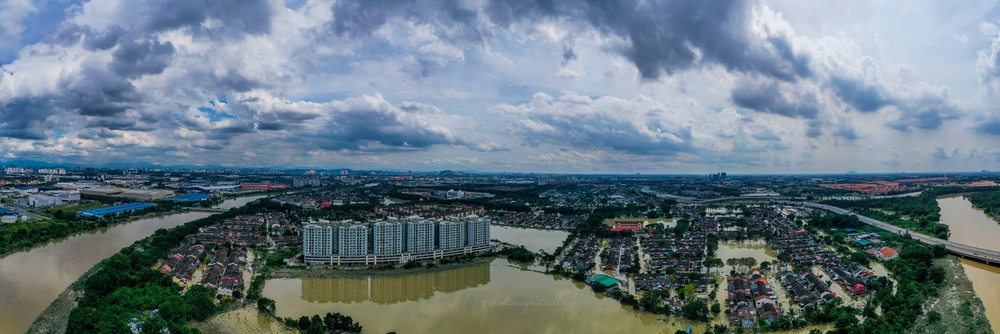
The coldest period in Malaysia is the months of December, January, and February.
Temperature: The highs are 32° high to 22° lows Celsius.
Weather: The northeast monsoon means that there are heavy rains across a majority of the country. The most severe storms occur on the north-eastern coasts of Malaysia while the west coast experiences minimal rain.
Events: Festivals like Christmas, New Year, and Hari Raya are held in December and January respectively.
Reasons to visit: The mornings can still provide beautiful sunny weather followed by intense rainstorms in the afternoon. It is a time of year when many tourists do not travel making flight and accommodation options more affordable.
Tips for the season: Expect heavy rains in the afternoons. The West Coast of Malaysia is the best option for tourism.
Singapore vs Malaysia?
Both Singapore and Malaysia are incredible travel destinations for solo travelers, tourists, families, and honeymoons. If you are looking for more of a metropolitan experience then Singapore should be your preference. On the other hand, if you are hoping to enjoy the unspoiled wilderness and jungles then Malaysia is the optimal choice. The cost difference between rural Malaysia and Singapore city may be a factor for solo travelers. Both locations offer comfortable weather, friendly people, and a large selection of activities, landmarks, and tourism attractions. Malaysia offers amazing history and plenty of minor attractions. Meanwhile, Singapore is a large city with a bustling town center and spanking new attractions. No need to check out more Singapore browse forums or Malaysia forum search to decipher your choice. Just reach out to your Australia destination expert and book your trip to visit KL or Singapore.
FAQ: Singapore vs. Malaysia – Which is the Best Destination for Travel?
Here are some frequently asked questions and answers to help you decide between Singapore and Malaysia for your next travel destination.
1. What are the key differences between Singapore and Malaysia as travel destinations?
- Singapore: A small, ultra-modern city-state known for its cleanliness, safety, and efficient infrastructure. It’s perfect for luxury travelers, urban explorers, and families seeking well-organized attractions like Sentosa Island, Marina Bay Sands, and Gardens by the Bay.
- Malaysia: A diverse country offering a mix of urban excitement and natural beauty. Kuala Lumpur’s iconic Petronas Towers contrast with idyllic beaches like Langkawi and lush rainforests in Borneo. Malaysia is more budget-friendly and culturally diverse.
2. Which destination is more affordable?
- Malaysia is significantly cheaper overall. From accommodation to food, transport, and activities, Malaysia offers great value for money.
- Singapore is known for being expensive, particularly for accommodation and dining out. However, there are affordable options like hawker centers for food.
3. Which destination is better for families with kids?
- Singapore: Known for its family-friendly attractions like Universal Studios, Singapore Zoo, and Science Centre Singapore. The city is compact, safe, and has excellent public transport.
- Malaysia: Offers a wider variety of natural attractions, such as Legoland Malaysia in Johor, Sunway Lagoon in Selangor, and nature parks. It’s a good option for families looking for diverse experiences at a lower cost.
4. What are the top attractions in each country?
- Singapore:
- Marina Bay Sands
- Gardens by the Bay
- Sentosa Island
- Universal Studios Singapore
- Chinatown and Little India
- Malaysia:
- Petronas Twin Towers (Kuala Lumpur)
- Langkawi Islands
- George Town (Penang)
- Taman Negara National Park
- Sipadan Island (scuba diving)
5. Which destination has better food?
- Malaysia: Renowned for its diverse cuisine, including Malay, Chinese, and Indian influences. Must-try dishes include Nasi Lemak, Laksa, and Char Kway Teow.
- Singapore: Famous for its hawker centers and iconic dishes like Hainanese Chicken Rice, Chili Crab, and Laksa. While the variety is similar, Malaysia’s street food is more affordable.
6. Which is safer: Singapore or Malaysia?
- Singapore: Extremely safe, with low crime rates and strict laws. It’s one of the safest cities in the world.
- Malaysia: Generally safe for tourists, but petty crime like pickpocketing can occur in busy areas. Exercise standard precautions.
7. Is Singapore or Malaysia better for nature and adventure?
- Singapore: Limited natural attractions, but there are nature reserves like Bukit Timah and coastal experiences in Sentosa.
- Malaysia: Ideal for nature lovers, with rainforests, mountains (e.g., Mount Kinabalu), and world-class dive sites like the Perhentian Islands.
8. Which destination has better shopping options?
- Singapore: High-end malls like Orchard Road and Marina Bay Sands offer luxury shopping experiences.
- Malaysia: Budget-friendly shopping at street markets, malls, and duty-free zones like Langkawi.
9. Can I visit both countries in one trip?
Yes, both countries are well-connected by air, road, and rail. The distance between Singapore and Malaysia’s Johor Bahru is just a short drive, and flights between major cities are frequent and affordable.
10. What is the best time to visit Singapore and Malaysia?
- Singapore: Year-round destination, but avoid the peak holiday season (late December to early January) for fewer crowds.
- Malaysia: Best visited during the dry season (March to October), especially for outdoor and beach activities.
11. Who should choose Singapore over Malaysia?
Choose Singapore if:
- You prefer a compact, modern city with world-class amenities.
- You have a higher budget and want a luxury travel experience.
- You’re traveling with kids and need family-friendly attractions in a safe, clean environment.
12. Who should choose Malaysia over Singapore?
Choose Malaysia if:
- You’re looking for a variety of cultural, historical, and natural attractions.
- You’re on a budget but want diverse experiences.
- You enjoy exploring local culture and food.
Final Thoughts
Both Singapore and Malaysia have their unique charms and attractions. Your choice depends on your budget, travel preferences, and the kind of experiences you’re seeking. For a modern, luxury trip, Singapore is unbeatable, while Malaysia offers more diversity and affordability. For an ultimate travel experience, consider visiting both!
